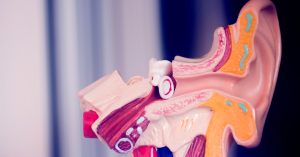Meniere’s disease is a chronic and often unpredictable condition that affects the inner ear, leading to a range of distressing symptoms that can disrupt daily life. From sudden bouts of vertigo to progressive hearing loss, this disorder can make even the simplest tasks challenging and affect a person’s sense of stability and well-being. While it is not life-threatening, Meniere’s disease can significantly impact one’s quality of life, particularly if left unmanaged.
Understanding the symptoms, possible causes, and available treatments is crucial for individuals living with Meniere’s disease, as well as their loved ones and caregivers. Whether you’re experiencing unexplained dizzy spells or coping with a recent diagnosis, this guide will provide a comprehensive look at what Meniere’s disease entails and how to manage it effectively. By staying informed, those affected can take practical steps toward regaining control over their health and everyday routines.
What Is Meniere’s Disease?
Meniere’s disease is a disorder of the inner ear that leads to episodes of vertigo, fluctuating hearing loss, tinnitus (ringing in the ears), and a sensation of fullness or pressure in the ear. It typically affects only one ear, though in some cases both ears can be involved. The condition is named after Prosper Ménière, a 19th-century French physician who first described the connection between inner ear dysfunction and the combination of these symptoms.
The inner ear is essential for both hearing and balance. Meniere’s disease disrupts its normal function, most commonly through a buildup of endolymph — the fluid that flows through the inner ear’s labyrinth. When this fluid becomes excessive or misregulated, it can interfere with the signals sent from the inner ear to the brain, leading to the symptoms that define the disorder.
This disease is considered chronic, meaning it persists over time, and symptoms can come in waves. A person may experience long symptom-free intervals followed by periods of frequent episodes. This unpredictability adds a layer of difficulty to managing the condition and maintaining everyday routines.
Meniere’s disease most commonly affects adults between the ages of 40 and 60, although it can occur at any age. It’s estimated that around 615,000 people in the United States are currently diagnosed with Meniere’s disease, with another 45,000 new cases diagnosed each year. The condition can affect men and women equally and does not seem to have a strong ethnic or racial predisposition.
Although the exact cause remains uncertain, what is clear is that early diagnosis and appropriate management can help reduce the frequency and severity of symptoms. By understanding the mechanics of how Meniere’s affects the inner ear, individuals and healthcare providers can better tailor treatment strategies to improve quality of life.
Recognizing the Symptoms of Meniere’s Disease
Meniere’s disease is often misunderstood because its symptoms can resemble those of other conditions — and because they tend to occur unpredictably. One of the most challenging aspects of living with Meniere’s is that its symptoms often come in episodes that can last anywhere from 20 minutes to several hours. Recognizing these hallmark symptoms is the first step toward an accurate diagnosis and effective management.
Vertigo
The most well-known symptom of Meniere’s disease is vertigo — a spinning sensation that can be severe enough to cause nausea, vomiting, and loss of balance. These episodes can strike suddenly and without warning, making it difficult to carry out everyday tasks. Unlike brief dizziness, Meniere’s-related vertigo episodes can last for extended periods and may leave individuals feeling unsteady for hours or even days afterward.
Hearing Loss
Fluctuating hearing loss is another common symptom, usually affecting only one ear. In the early stages of the disease, this hearing loss may come and go, often worsening during or after vertigo attacks. Over time, however, hearing loss may become more permanent and severe. The affected frequencies are typically low or mid-range, which can make conversations sound muffled or distorted.
Tinnitus (Ringing in the Ears)
Tinnitus — a persistent ringing, buzzing, or whooshing sound in the ear — is frequently reported by those with Meniere’s disease. The intensity of the noise can vary and may become more pronounced during attacks. For many, tinnitus is more than just a nuisance; it can interfere with concentration, sleep, and overall mental well-being.
Aural Fullness
Many people with Meniere’s experience a sensation of fullness or pressure in the affected ear, similar to what you might feel during a change in altitude. This sensation can occur before or during a vertigo episode and may be accompanied by muffled hearing.
Emotional and Cognitive Impact
The unpredictable nature of Meniere’s disease symptoms can take a toll on mental health. Anxiety about the next vertigo attack, frustration from hearing fluctuations, and fatigue from poor sleep due to tinnitus are all common experiences. Over time, this can lead to increased stress, depression, and social withdrawal if not properly managed.
What Causes Meniere’s Disease?
Despite decades of research, the exact cause of Meniere’s disease remains elusive. However, several contributing factors and theories have emerged that help explain why this condition develops in some individuals and not others. Understanding these potential causes can guide both diagnosis and treatment strategies.
Endolymphatic Hydrops: Fluid Imbalance in the Inner Ear
The most widely accepted theory is that Meniere’s disease results from a condition called endolymphatic hydrops, which involves an abnormal buildup of endolymph — the fluid within the labyrinth of the inner ear. This fluid plays a critical role in both hearing and balance. When the volume or pressure of endolymph increases, it may interfere with the normal functioning of sensory cells and lead to the hallmark symptoms of Meniere’s disease: vertigo, tinnitus, hearing loss, and aural fullness.
However, not everyone with endolymphatic hydrops develops Meniere’s disease, which suggests other factors may also be involved in triggering symptoms.
Possible Triggers and Contributing Factors
- Autoimmune Reactions: Some researchers believe that the body’s immune system may mistakenly attack inner ear tissues, leading to inflammation and fluid imbalance.
- Viral Infections: A history of inner ear infections or upper respiratory viral illnesses may play a role in damaging inner ear structures.
- Genetics: There may be a hereditary component to Meniere’s disease.
- Allergies: Environmental or food allergies could potentially trigger inner ear inflammation.
- Migraine Associations: Some researchers note an overlap between migraine sufferers and those with Meniere’s disease.
- Vascular Irregularities: Poor blood flow or constriction of blood vessels in the inner ear could contribute to symptoms.
Environmental and Lifestyle Influences
While not direct causes, certain lifestyle factors such as high sodium intake, excessive caffeine or alcohol consumption, and chronic stress can exacerbate Meniere’s disease symptoms. These triggers may affect fluid retention or blood flow in the inner ear.
How Meniere’s Disease Is Diagnosed
Diagnosing Meniere’s disease can be complex, largely because its symptoms overlap with those of other conditions that affect the inner ear or nervous system. There’s no single test that can definitively confirm Meniere’s disease, which means diagnosis typically involves a process of elimination and careful symptom tracking over time.
Clinical Criteria for Diagnosis
Doctors usually begin by reviewing a patient’s medical history and symptom pattern. The American Academy of Otolaryngology–Head and Neck Surgery has established diagnostic criteria that include:
- Two or more episodes of vertigo lasting at least 20 minutes
- Audiometrically documented hearing loss
- Tinnitus or aural fullness
- Exclusion of other possible causes
Hearing Tests (Audiometry)
An audiogram is a key tool in diagnosing Meniere’s disease. This test measures hearing sensitivity across various frequencies. In Meniere’s, hearing loss typically affects low and mid-range frequencies and can fluctuate over time.
Balance Assessments
Tests like ENG/VNG, rotary chair testing, and posturography assess balance function. VEMP can also help detect inner ear pressure abnormalities.
Imaging Studies
MRI scans are used to rule out tumors or structural abnormalities in the brain and ear that could mimic Meniere’s symptoms.
Electrocochleography (ECoG)
This test measures electrical responses in the inner ear and may help detect elevated inner ear pressure, supporting a Meniere’s diagnosis.
The Role of Patient Advocacy
Tracking symptoms and advocating for specialized care with an ENT or neurotologist can improve the likelihood of an accurate and timely diagnosis.
Treatment Options for Meniere’s Disease
While there is currently no cure for Meniere’s disease, a variety of treatment strategies can help reduce the frequency, severity, and impact of symptoms. The right treatment plan depends on the individual’s symptoms, overall health, and lifestyle.
Lifestyle and Dietary Modifications
- Low-Sodium Diet: Reduces fluid retention.
- Fluid Management: Spread water intake and avoid caffeine and alcohol.
- Avoiding Triggers: Use a symptom diary to find and minimize personal triggers.
Medications
- Diuretics: Help prevent fluid buildup.
- Antivertigo medications: Reduce severity of vertigo attacks.
- Antiemetics: Alleviate nausea.
- Corticosteroids: Reduce inflammation and pressure in the inner ear.
Vestibular Rehabilitation Therapy (VRT)
Custom exercises help retrain the brain to compensate for balance problems.
Hearing Aids
Devices can improve communication and may help with tinnitus masking.
Invasive or Surgical Treatments
- Gentamicin Injections: Reduce balance signals in the affected ear.
- Endolymphatic Sac Surgery: Relieves fluid pressure.
- Vestibular Nerve Section: Disables balance signals while preserving hearing.
- Labyrinthectomy: Removes the balance organ (for severe, intractable cases).
Psychological Support and Counseling
CBT, support groups, and stress management can improve coping and emotional wellbeing.
Living Well with Meniere’s Disease
Living with Meniere’s disease means adapting to a chronic condition that may change unpredictably over time. While there’s no definitive cure, many people are able to manage their symptoms effectively.
Coping with Unpredictability
Flexible scheduling, symptom tracking, and having medications on hand can help reduce the disruption caused by vertigo attacks.
Managing Stress and Mental Health
Mindfulness, therapy, and support groups are key to maintaining mental resilience.
Building a Support Network
Educating family and friends, joining support groups, and seeking community resources can improve emotional health and reduce isolation.
Staying Physically Active
Low-impact exercises like walking and tai chi support balance and overall fitness. Vestibular therapists can create customized movement plans.
Adapting the Home and Work Environment
Remove fall hazards, install safety bars, and ask for workplace accommodations if needed.
Monitoring and Tracking Symptoms
Use journals or mobile apps to track patterns, which can guide future treatment adjustments.
Conclusion
Meniere’s disease may be a lifelong condition, but it doesn’t have to define your life. With a clear understanding of the symptoms, causes, and treatment options, individuals can take charge of their health and manage this complex disorder effectively. Early recognition and diagnosis are crucial, as they allow for prompt intervention and greater opportunities to prevent further hearing loss or balance complications.
From dietary changes and medication to physical therapy and emotional support, there are numerous tools available to reduce the impact of Meniere’s disease. While not every person will respond to the same treatments in the same way, a personalized plan developed in collaboration with healthcare providers can make a significant difference in daily functioning and long-term outlook.
Just as importantly, learning to adapt and build resilience is key. Whether through community support, lifestyle modifications, or medical advances, those affected by Meniere’s disease are not alone — and many find meaningful ways to thrive despite the unpredictability.
By staying informed and proactive, individuals can regain control, reduce uncertainty, and focus on living a full and balanced life.
FAQ
What triggers Meniere’s disease episodes?
Triggers can vary between individuals but commonly include high salt intake, stress, fatigue, alcohol, caffeine, and certain allergens. Keeping a symptom diary can help identify personal triggers, making it easier to manage or avoid them.
Can Meniere’s disease be cured?
There is currently no cure for Meniere’s disease, but symptoms can be managed through medications, lifestyle changes, and in some cases, surgery. Many people are able to reduce the frequency and intensity of their episodes with a tailored treatment plan.
Is Meniere’s disease a form of hearing loss?
Meniere’s disease causes fluctuating sensorineural hearing loss, typically in one ear. In the early stages, hearing may return to normal between episodes, but over time, the loss can become more permanent.
How is Meniere’s disease different from vertigo or tinnitus alone?
Meniere’s includes episodes of vertigo, tinnitus, hearing loss, and ear fullness — all occurring together and often recurrently. Vertigo or tinnitus alone can be symptoms of other conditions, but their combination and pattern are key features of Meniere’s.
Can lifestyle changes really help manage symptoms?
Yes, lifestyle modifications such as reducing salt, managing stress, getting regular sleep, and avoiding known triggers can significantly improve symptom control. These changes often serve as a first-line approach before or alongside medical treatment.
This article is for informational purposes only and is not a substitute for professional medical advice, diagnosis, or treatment. If you are concerned about your hearing or ear health, please consult a qualified healthcare provider.






